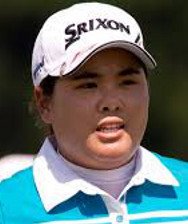
If you look at the Rolex Official Women’s World Golf Rankings, as of late January 2016, you would see 11 South Korean women in the top 25, including 6 of the top 10.
And, that’s not including current world number one Lydia Ko who was born in South Korea, but moved to New Zealand at age 6. How did a country of only 50 million people supplant the United States as the queens of international golf?
In 1998, a young athletic golfer named Se Ri Pak came out of nowhere and won the Women’s U.S. Open and the PGA Championship. Pak’s wins, the first majors captured by a South Korean, served to inspire a whole generation of young girls.

One of the girls watching Pak in the summer of 1998 was a nine-year old named Inbee Park. Amazingly, just a decade later, Park would capture her own U.S. Open and supplant Pak as the youngest woman to ever win the event.
It takes more than an inspiring player to achieve South Korea’s current level of excellence. South Korea has nurtured its best young players by creating a three-tiered level of professional golf. In the United States, American players have the Symetra Tour and the LPGA. South Korea has three levels of women’s professional golf – the Jump Tour, the Dream Tour and Korean LPGA Tour. The three tours hold 16, 22 and 32 events respectively. All three tours are run by the same organization, providing players a seamless experience.
More tours equate to more tournaments and more opportunities for these young women to win titles and post top ten finishes. Obviously, success breeds confidence and nothing nurtures a young golf swing more than confidence.
By the time these girls graduate to the LPGA Tour, they have an impressive amount of tournament experience. In fact, multiple Korean women have won their first major championship before becoming a member of the LPGA Tour.
Young Korean golfers also find it easier to secure sponsorships from their corporations than their American and European counterparts. Hi-Mart, a kind of South Korean Best Buy, sponsors dozens of players on both the KLPGA Tour and the LPGA Tour. This financial support is critical to keep younger players in the game. This financial security obviously reduces the anxiety that younger players feel as they attempt to establish their professional careers.
South Korean culture is also a part of the equation. The media, the schools and other outlets reinforce and encourage national pride on a daily basis. Young South Korean girls see images of Se Ri Pak and their latest heroes on television and social media every day. These girls are encouraged to continue the tradition established by Pak and they are nurtured financially and organizationally at every level of the game.
The final ingredient that helps explain South Korean dominance is the most important – hard work. Perhaps more than any other sport, golf requires endless repetition on the range to create the muscle memory necessary to allow players to hit quality golf shots under tournament pressure. In 2010, the Journal of Sports and Leisure Studies wrote a report entitled “A Socio-cultural Analysis of the Influx and Success of Korean Golfers on the LPGA Tour.”
The study found that South Korean golfers worked harder than their tour peers. They consistently spent more time on the driving range and the practice putting greens.
In American professional team sports, we constantly analyze the importance of coaches creating or changing the culture of a team. It’s no different here. Success at the highest level requires focus and specialization. South Korea has shown the pathway to financial success and national pride for its young women. They are simply seizing the opportunities presented to the





